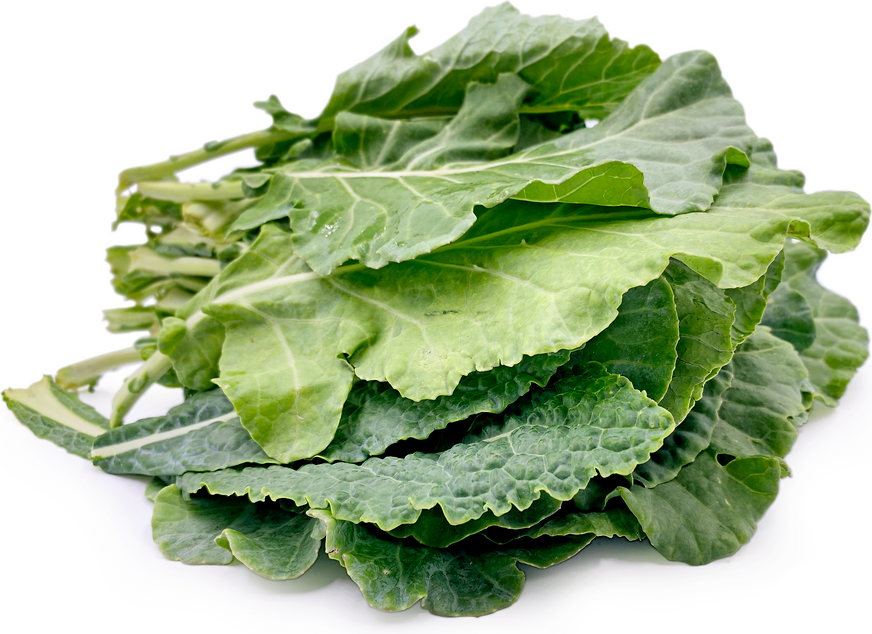


Brazilian Kale
Estimated Inventory, lb : 0
Description/Taste
Brazilian kale is small to medium in size, growing on heads averaging 30-45 centimeters in height, and consists of broad, flat, and rounded leaves. The wide, dark green leaves have frilly, serrated edges and prominent white veins span across the center of the leaves. The leaves are also connected to fleshy, fibrous, light green stems that are short, thick, and strong. Brazilian kale is crisp and tender with a bitter-sweet, green taste that is reminiscent of the flavor of cabbage.
Seasons/Availability
Brazilian kale is available year-round, with a peak season in the winter.
Current Facts
Brazilian kale is botanically a part of the Brassicaceae family and is a leafy, non-heading plant used in many fresh and cooked culinary dishes. The fourth largest country in the world and the largest country in South America, Brazil has a diverse food history that has been influenced by many different cultures including Portuguese and African, and also the indigenous groups found within South America. Within Brazil, greens such as kale have been widely adopted and are used in many of the traditional dishes of the country.
Nutritional Value
Brazilian kale is an excellent source of vitamin C and also contains fiber, vitamins A and K, copper, calcium, and iron.
Applications
Brazilian kale can be used in both raw and cooked applications such as sautéing, stir-frying, braising, baking, roasting, and boiling. Any large ribs should be removed from the leaf and discarded before using, and the leaves can be lightly torn or finely sliced to create a delicate texture. Brazilian kale can be tossed into salads, mixed into soups, or sautéed with aromatics and cassava flour to make a crispy, crunchy dish. It can also be used interchangeably with collard greens and is typically served with sausages and smoked meats. In Brazil, kale is sometimes used in caldo verde, which is a soup with spicy sausage or shredded dried beef, pureed potatoes, and broth. Brazilian kale pairs well with onions, garlic, vinegar, black beans, white rice, and potatoes. Whole leaves will keep up to a week when wrapped in paper towels and stored in a plastic bag in the refrigerator. Sliced leaves will keep up to three days when washed, dried, and stored in a paper towel and plastic bag in the refrigerator.
Ethnic/Cultural Info
Brazilian kale is often used in the Brazilian national dish known as feijoada completa, which is a black bean stew originating from Rio De Janeiro. There are many variations of this dish, and in traditional recipes, the stew takes over twenty-four hours to make. In feijoada completa, kale is typically sautéed with garlic and added to oranges, sausages, smoked pork cuts, and served with fried cassava, rice, or bananas. In Brazil, the dish is commonly shared between family and friends, slowly consumed on lunch breaks, and is ordered at restaurants on Saturdays or Wednesdays.
Geography/History
Kale is native to select regions in Asia and the eastern Mediterranean and has been cultivated since 2000 BCE. While the exact origins are unknown, it is believed that kale was introduced to Brazil by Portuguese explorers and immigrants and has been used in South America for hundreds of years. Today Brazilian kale is found at local markets across Brazil.
Podcast




